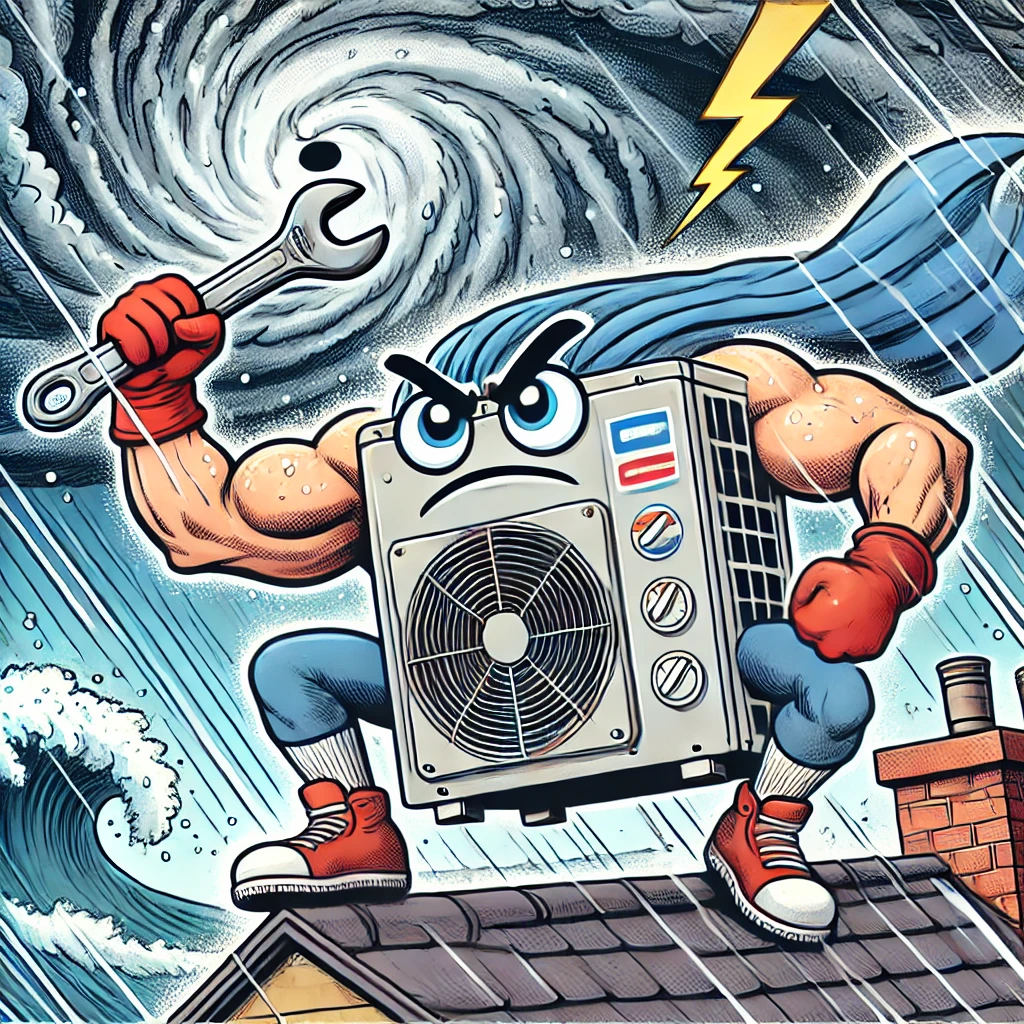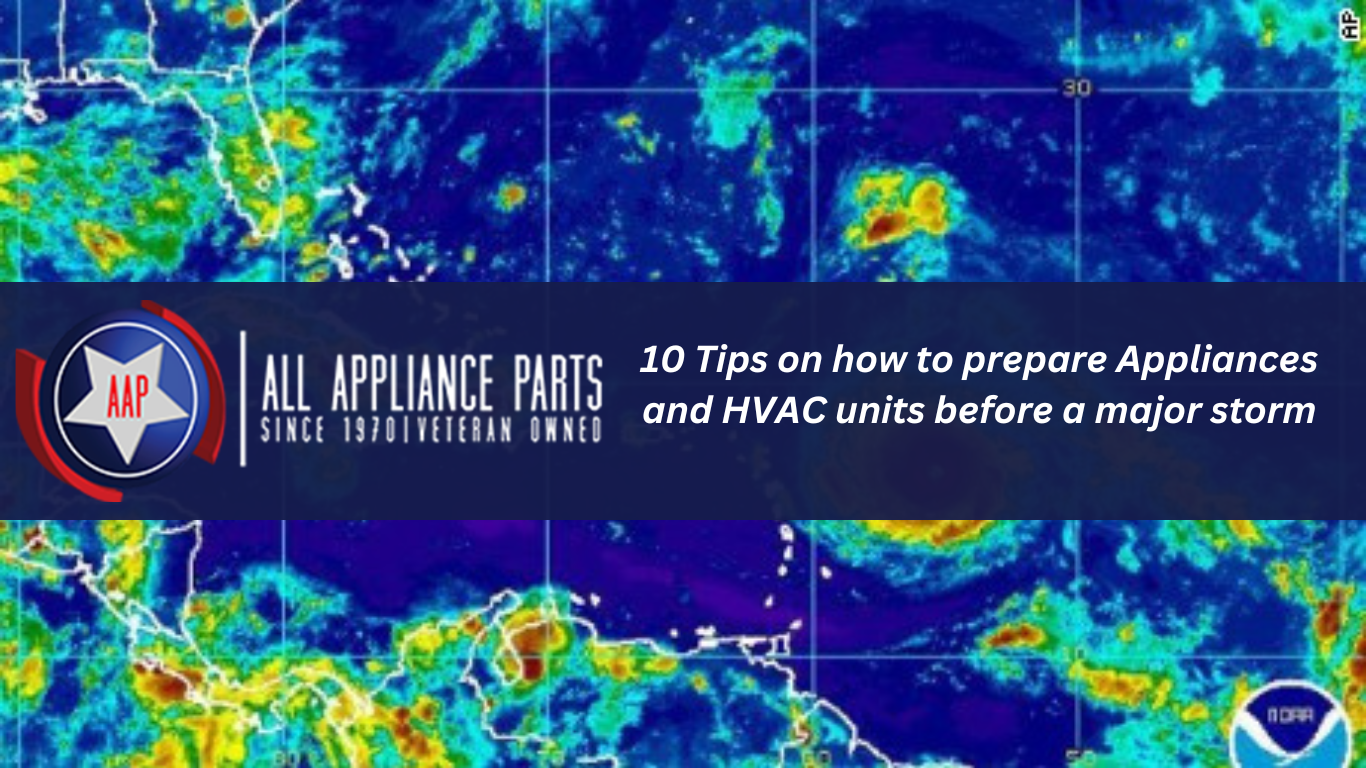🌀 1. Unplug Appliances Before the Storm Hits
Power surges and lightning strikes can destroy electronics. Unplug washers, dryers, microwaves, and other major appliances before the storm makes landfall.
🔌 2. Turn Off the HVAC System
Power down your AC at the thermostat and the breaker box. This prevents electrical damage during outages or surges.
💧 3. Elevate Appliances in Flood-Prone Areas
Place washers, dryers, and chest freezers on concrete blocks or platforms if they’re in basements or garages vulnerable to flooding.
🌬 4. Secure Your Outdoor AC Unit
Bolt it down or use hurricane straps to keep the condenser in place. Flying debris or high winds can dislodge or damage it.
🔍 5. Check and Clear Drain Lines
Make sure your HVAC condensate drain line is clear to avoid backup and water damage during heavy rain.

🔧 6. Perform Pre-Storm Maintenance
Replace HVAC filters, inspect your system, and ensure it’s in peak condition — it’ll be one less worry if service is interrupted after the storm.
🧯 7. Install Surge Protectors
Use individual or whole-home surge protectors to shield appliances and HVAC units from voltage spikes.
🧰 8. Shut Off Gas to Gas-Powered Appliances
If applicable, turn off gas valves to ranges, dryers, or water heaters to avoid leaks or fire risks.
📦 9. Cover or Protect Outdoor Units
Use manufacturer-approved covers or plywood barriers to protect the AC condenser from debris — but remove covers before restarting the system post-storm.
📋 10. Document and Photograph Appliances
Take photos of all major appliances and your HVAC system. If you need to file an insurance claim, this helps prove condition and ownership.

